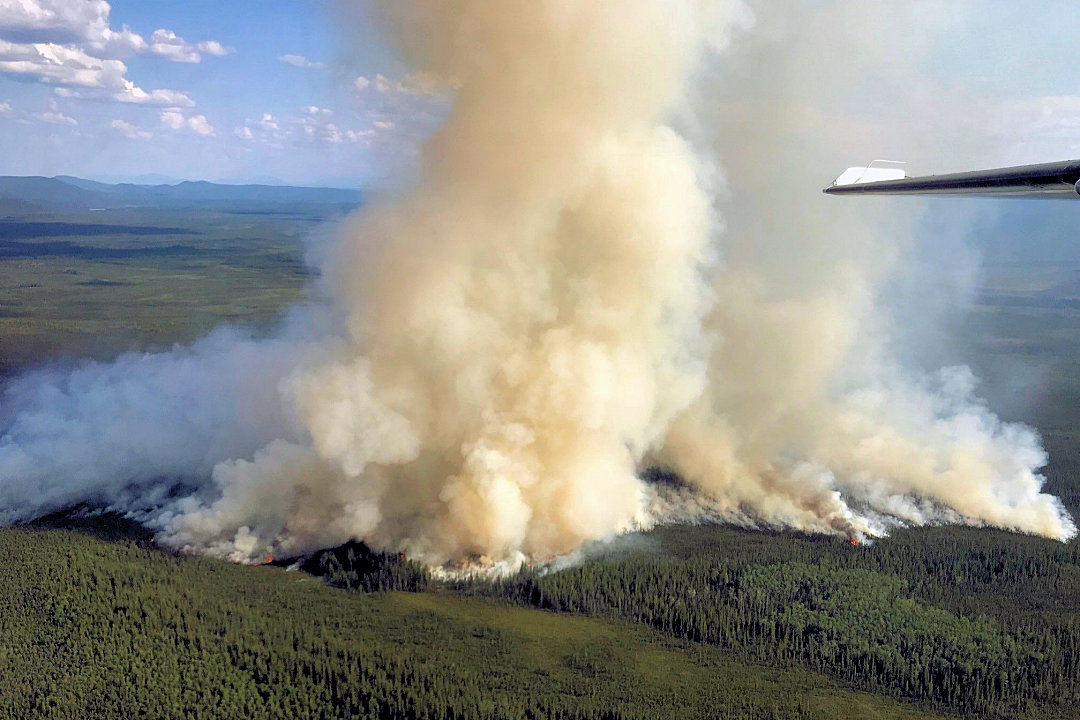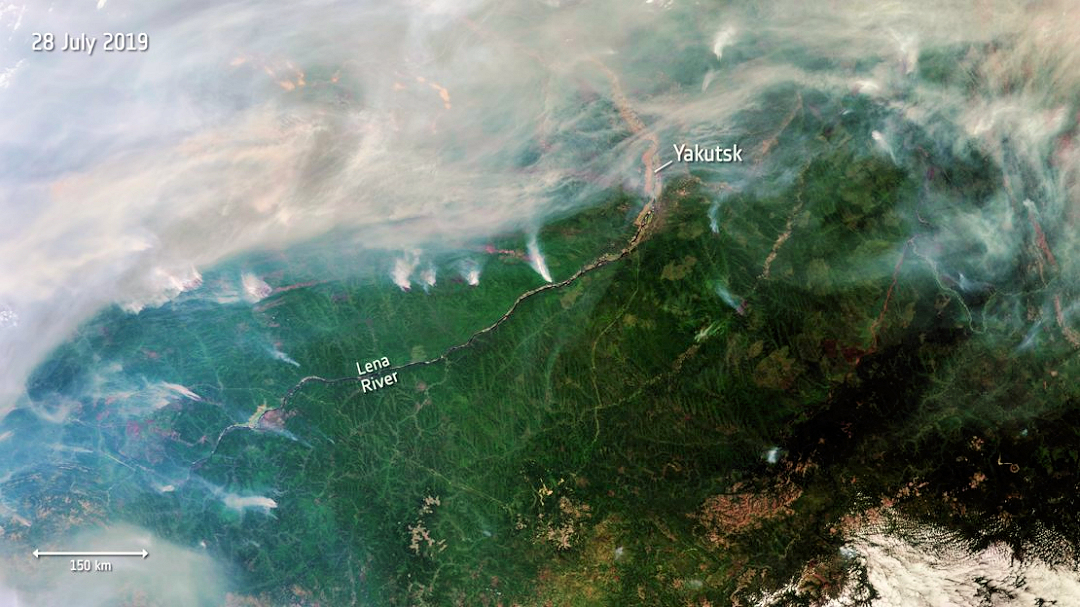
Imagine all of Belgium is on fire and there are almost no people around to fight all the fires. This is roughly the current situation in many Arctic regions of Russia, Canada and Alaska. Since June, hundreds of fires have been blazing in tundra and taiga regions, often far from civilization and therefore difficult to fight. But the health effects are also felt in distant towns and villages. And the authorities seem to be powerless against it.
The fires are fueled by the long-lasting drought, exceptionally high temperatures and unusual weather situations. Researchers from the WMO (World Meteorological Organization) already pointed out in June that these are clear signs of the changing climate in the Arctic. The Copernicus EU’s CAMS atmospheric observation program recorded the warmest June 2019 since records began. Although this is not the main reason for the fires, the dry conditions fuel any ignition, no matter how small. This is caused by lightning strikes, concentrated sunlight by litter lying around or caused by irresponsible behavior of hikers, hunters and fishermen. When the fire then blazes, it has enough food to burn for up to several weeks. More than 30,000 square kilometers of Arctic land has already been burned and there seems to be no end in sight.


In Russia alone, the Krasnoyarsk, Irkutsk, Sakha and Buryatia regions are affected by the fires, and hundreds of thousands of people in cities such as Irkutsk, Krasnoyarsk, Novgorod have their health threatened by thick clouds of smoke. But the official authorities said that at the moment there would be no danger to people. Greenpeace Russia disagrees with this statement. The government has now instructed the military to provide all support to civilian authorities. Currently, nearly 3,000 men and women with about 50 aircraft are extinguishing fires in the various regions. In Canada and Alaska, too, hundreds of firefighters and firefighting aircraft are in the process of extinguishing the fires, and here, too, the clouds of smoke have really covered up larger towns.

Fires in Arctic and subarctic regions are not uncommon and are even part of the life cycle of plants to prevent compaction and scrub encroachment of the understory. However, these are short fires that soon go out. This year, however, fires after fires have broken out and blazed for a long time. As a result, the vegetation has been damaged in the long term. WMO researchers estimate that between 100 and 130 megatons of carbon dioxide have been released into the atmosphere since June from the fires alone. This also means thatCO2 sinks(plants) will be gone for years to come. In addition, tons of pollutants enter the atmosphere and are drifted with the wind systems, which are also under changes the drought. This means that these gases, which are harmful to health, can massively reduce air quality even hundreds of kilometers away, as the example in Russia clearly shows.
The fires are just one of several unusual meteorological events this year. In June and July in particular, temperature records have been breaking in Europe and the Arctic. For example, 900 kilometers from the North Pole, a fabulous 16°C was recorded at the world’s northernmost station; on Greenland, more than 20°C was measured at 71° North, and the Summit Camp station at 3,200 m.a.s.l. measured 0° in the middle of the ice sheet. The amount of Arctic ice overall is on track to beat the negative record set in 2012, and on Greenland the ice is melting faster than ever before measured. For researchers, it is clear that such extreme events may become the new normal if the Paris climate change targets are not met after all. But if you look at the current global situation, it looks rather bleak for this.
Dr Michael Wenger, PolarJournal





